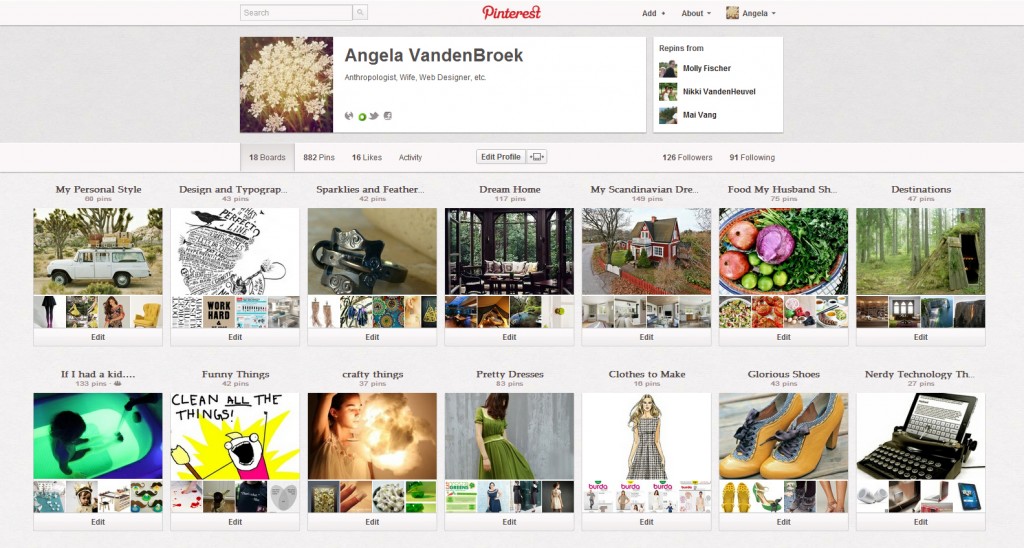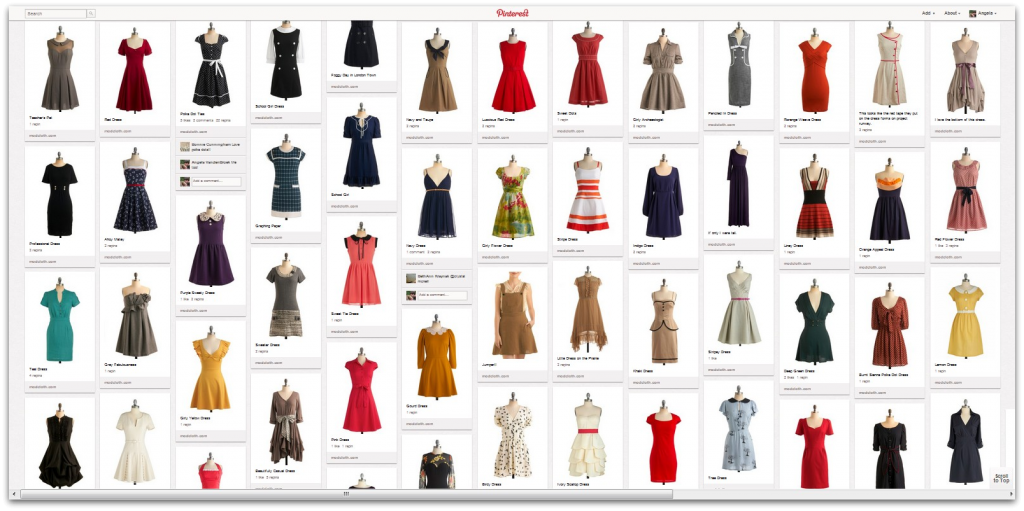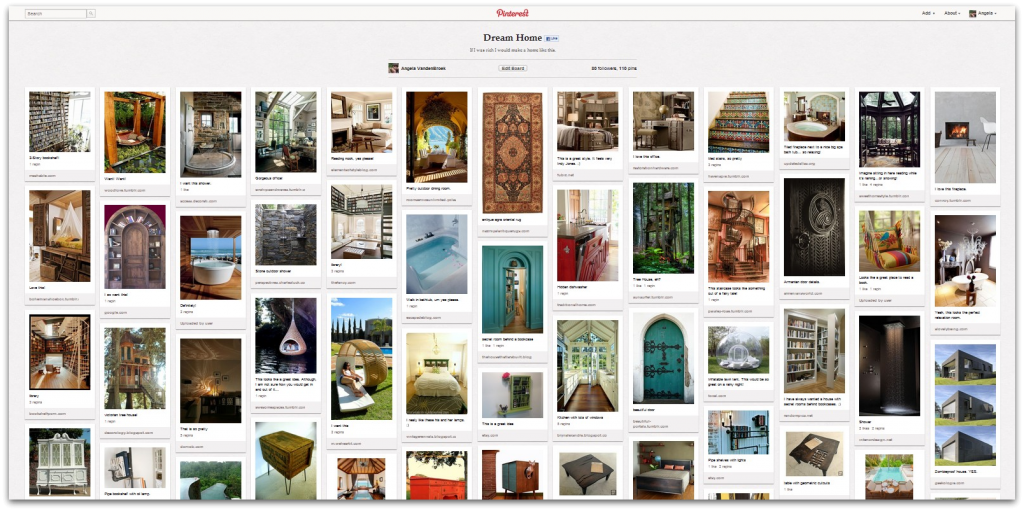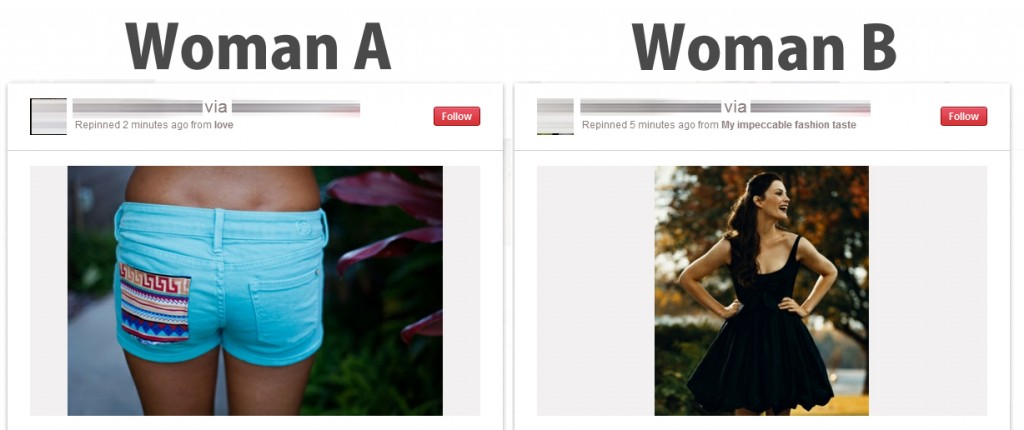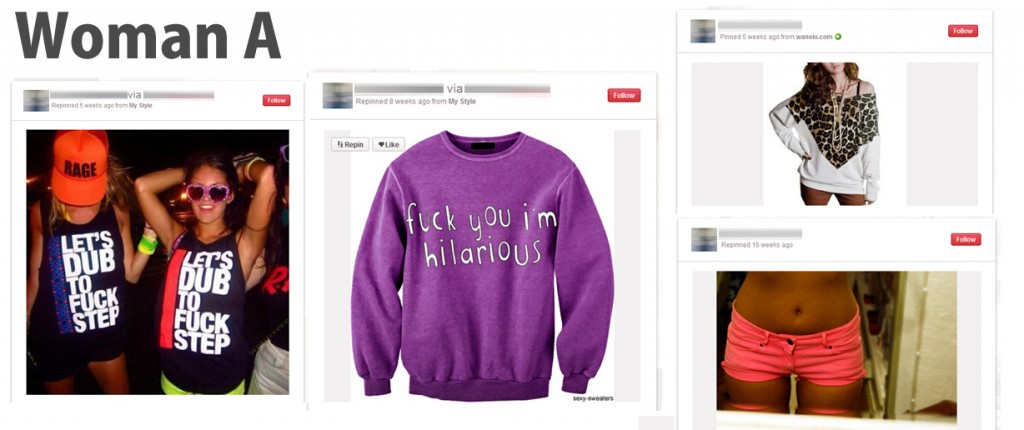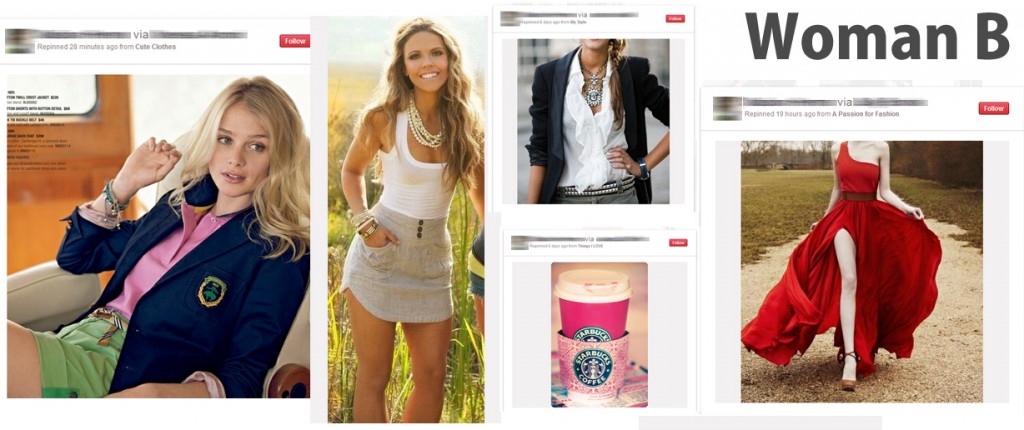Do you Pinterest? I do. I find it incredibly addicting. I started pinning this fall after a colleague suggested that I might enjoy Pinterest. So, I headed over to the Pinterest.com homepage and requested an invitation. It arrived the next day and I signed in. At first, I was not sure for what I was going to use this web app. Every web application I use has a purpose in my life. If it serves no purpose for me, then I quickly find that I have no time to fuss with it. I use Facebook to keep up with college friends and check up on what people from my past are doing (i.e. internet stalk people from high school and my three younger sisters). I use Google+ and Twitter to network with anthropologists and web designers/developers. I use Google Reader to quickly read, share and catalog news from all my interest areas. I use Evernote to catalog all of my thoughts and those things I must remember, namely code snippets for web development. I use… well you get the picture.
Pinterest at first seemed to serve the same function as Evernote, but not nearly as well. It seemed me allowed me to save scraps of visual material from across the internet. However, it lacked mechanisms to quickly find things once I had pinned them and it had limited space to add meta data and commentary. However, I wanted to give it a try before simply wandering away to other things.
I started by browsing my friends boards. Many of which were boards with clothes and interior design. So, I created two boards: Pretty Dresses and Dream Home. I treated it much like I did my bedroom wall when I was a kid, where I used to tape pictures cut from magazines. So I perused one of my favorite websites for clothing inspiration, Mod Cloth, and pinned all of the dresses that I liked. Then headed over to Pottery Barn and other such places and pinned the items I liked there.
However, my pretty dresses board was incredibly boring and not particularly visually appealing. In fact, it looked much like the catalog on the store’s website. Beyond that, I knew that I would never purchase any of these dresses. They are a bit to expensive for my repaying-student-loans-while-supporting-my-grad-student-husband budget and vintage dresses never come in my size. That was when I had my epiphany moment. I perused my friends’ boards and pins and found that, while some boards were functional lists of things to make or buy, most boards were not. Most boards contained images that represented what we like, what we enjoy and who we are. Just as I wear clothes or decorate my house with items that represent the identity I wish to portray to others, my boards were a collection of how I wanted to represent myself to the online community. My Dream House board quickly filled with images of libraries and “culturally” inspired design. They showcased my interests in other cultures and my love for reading.
However, unlike the clothes I actually wear and the home decor items I actually own, my Pinterest boards were not limited by my ability to create, my economic standing, or the shape of my body. I could represent myself without these limits. I was limited more by how I perceived others’ interpretations of my pins and by my own imagination. I could represent myself with vintage dresses that were full of vibrancy and respected my ideas of modesty, even if they were out of my price range or would not flatter my body shape. Pinterest, then, had become something more than a utilitarian tool for following friends or helping save, organize and remember scraps of JavaScript or PHP. Pinterest is a tool for identity building. By identity, I am talking about the practice of representing oneself to achieve some goal or desire. In this case, my goal was to create an online identity that represented who I want my online contacts to see me as outside of the constraints of my physical resources.
What I find most fascinating about this type of identity practice is the resources. In “real life,” you are limited by what resources are available to you, which is in a real way limited by your life’s context. If you want to represent yourself as an attractive woman, then you will require the financial resources to purchase high quality clothes, expensive haircuts and styles, manicured nails, a healthy diet and the free time to invest in self improvement. On Pinterest, one need only collect the elements of this image and compile them into a board, there are no financial constraints to presenting this image.
Then why do we see such variation in what is pinned? Why is a pair of rather unattractive short-shorts being pinned instead of a sea of elegant dresses?
Why does Woman A represent herself with sweatshirts, cheap tank tops, short-shorts and obscenities…
…, while Woman B represents herself with dresses, country club wear, pearls, jackets and Starbucks?
The obvious answer is each woman has her own style. But the anthropologist in me finds it more interesting that, when all “real life” limits are removed from the context, our self knowledge is still shaped by them and our “in real life” selves.
I reached out to these two women and asked them about themselves and why they chose these images to pin. Woman A described herself as a 22 year old “party girl” from Ohio. She has a high school diploma and works as an administrative assistant in a small business that “doesn’t require [her] to get fixed up.” She described her pins as “White Trash Pride! :-D” When I asked her why she didn’t pin expensive or designer clothing or dresses, she replied, “That’s not the kind of girl I am…I am a low income hick from Ohio and I love my life, no need to fake it on the web…I think its funny.”
Woman B is a 24 year old woman from Florida. She works in retail as a sales associate. She described herself as a “college student looking for Mr. Right.” When I asked her why she chose the images she pinned, she replied “I can’t afford those clothes right now. But I will when I finish college and marry myself a doctor or CEO or something. I guess they are the me that I will be.” I also asked her if she pinned clothes that were similar to the clothes she actually wore. She said no, “Why would I? My clothes are boring.”
While both women were not financial capable of purchasing expensive, designer clothing, only Woman B saw them as a part of her self knowledge. Woman A did not see upward financial mobility as something that was part of her present or future, whether by choice or circumstance (I did not ask). So, Woman A saw a representation of her self through pinned items containing clothes like Woman B as a violation of who she was.
There are other deeper questions that could be asked here; but, for now, I think this is an interesting introduction. Perhaps, down the road, I will do some in depth interviews with Pinterest users to look more closely at identity making on Pinterest.
